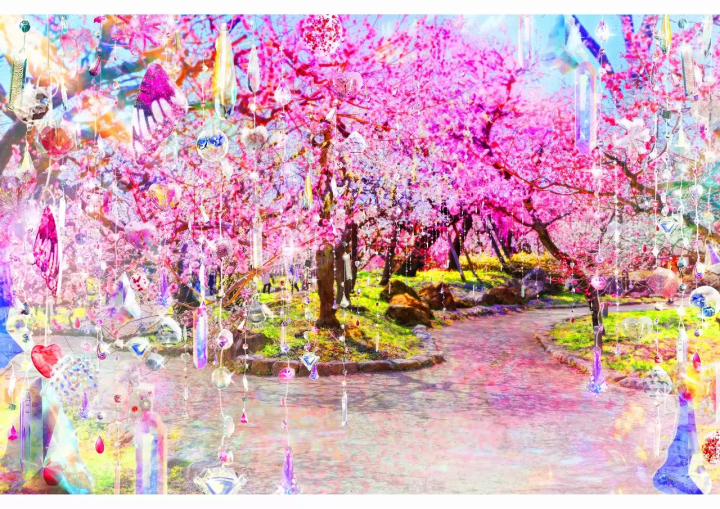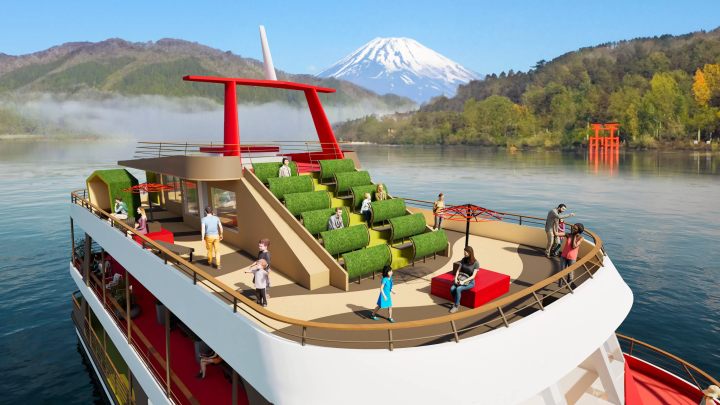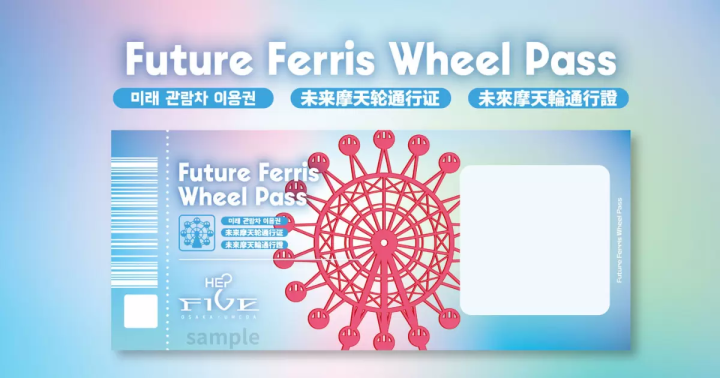A must-see for gourmet travelers! Tips for enjoying local Japanese cuisine

We want you, the foodie, to meet the people who made the food and experience the local culture through food. Traveling through the unique "food culture" of each region will surely broaden your world! This time, we will introduce how to enjoy the local cuisine as an example of Kozushima and the Izu Islands, which are off the coast of Tokyo where we live.
-
Table of Contents
- Japanese food is recognized worldwide for its depth!
- Discovering local life through food
- Ask the locals!
- Kozushima's Traveling Cafe & Inn "Vacation House FamiliA"
Japanese food is recognized worldwide for its depth!

What is your favorite Japanese food?
Sushi? Tempura? Or maybe Ramen?
Did you know that washoku (traditional Japanese cuisine) was registered as a UNESCO Intangible Cultural Heritage in 2013?
The official name of the registered heritage is "Washoku: Traditional Food Culture of the Japanese People," and it is the fifth food-related heritage to be registered in the world.
In other words, there is a culture that is rooted in Japanese food, and culture is linked to people's lives.
This award recognized the important role food plays in annual events, strengthening local ties and being passed down through the generations.
It's nice to visit famous restaurants in big cities, but why not take the opportunity to travel to the countryside and experience the unique food culture of that area?
This time, we will introduce how you can enjoy culture through food using the examples of Kozushima and the Izu Islands, remote islands off the coast of Tokyo where we live.
Please also see this article for information on how to access Kozushima.
Discovering local life through food
For example, if a local specialty is fish or vegetables, it's easy to imagine that this is because they grow well in that area.
Why does it grow? Why don't we have it in our area? Is there anything similar?
It will help you notice the difference.

The Izu Islands, where Kozushima is located, are not only famous for their fresh fish, but also for the cultivation of angelica leaves.
Angelica leaves (Ashitaba) is also known as a superfood.
While the climate of the Izu Islands is suitable for its growth, it does not seem to grow so well in other areas. If you look closely, it seems that the size of the plants varies slightly on each island.
When it comes to local specialities and regional cuisine, the wisdom of the people living in that area is also involved.
To make it last longer, it can be fermented, dried, or mixed with other things.
"Kusaya" is widely produced in the Izu Islands. It has been passed down as an important preserved food in the days before refrigeration technology.
To make Kusaya, they fillet the fresh fish, and remove the innards and blood, and then they soak in a seasoning called Kusaya-liquid, which has a unique smell. After soaking in Kusaya-liquid, they are soaked in water again and then dried slowly in the sun.
During the Edo period, salt was necessary for paying annual taxes on the island, so in order to conserve the precious salt, the fish were not soaked directly in salt but instead soaked in salt water, which was then repeatedly reused. It is said that the salt water then fermented to create "kusaya-liquid."
Kusaya-liquid is still made today with the addition of salt over time, so the taste varies slightly depending on the island, restaurant, and household.
It is famous for its strong smell, but the taste is addictive, making it a popular menu item at izakayas ( local restaurants) .

And when will you eat the cuisine?
Japanese food is deeply involved in annual events. It's easy to understand if you imagine New Year's dishes.
Other precious items are often used for hospitality, celebrations, and festivals.
For example, sugar was a scarce commodity on Kozushima, so hospitality dishes, for entertain important guests on special occasions, were sweetly flavored with lots of sugar.
I've heard that Kozu udon noodle is very sweet.
Even among the foods that are usually served on the table, there are some dishes that make good use of the seasons.
On Kozushima, there is a custom of exposing moray eels to the harsh winter winds, drying them in the sun, and then deep-frying them. This is truly a culinary wisdom, as they use nature to make the strong-smelling moray eel delicious!
Please also refer to this article for information on the gourmet food you can enjoy on Kozushima.
Ask the locals!
When you travel, you may come across something surprising in a restaurants and wonder what it is, but travel is full of new experiences! I'm sure the local men will be delighted if you give it a try!
In the past, guests from overseas have also tried fried moray eel (Utsubo), Kusaya, and Turtle hand (kamenote) !!
(If you thought, "What, a turtle's... hand?" don't worry, it's not a real turtle... but to find out the rest of the answer, head to Kozushima!)
When they returned and said, "It was delicious!", we felt very happy.
No matter how precious and wonderful local foods and other unique things are, they become so commonplace that locals don't even notice them. That's why when they receive praise, it makes them feel proud.
Even if you learn about local specialties and specialty products through guidebooks or the media, there are few historical accounts of why people started eating them. That's why we believe that the key to enjoying local food is to actively talk to local people!
It might be fun to stay at a homestay (Minshuku) and ask the host about it.
If you go for a drink at an izakaya and ask, you might even get to meet the person who raised it or the fisherman who caught it.

On the other hand, if the food you are looking for is not there, it may not be in season, or it may be that the weather was not good enough and were unable to go fishing. Japan's rich food culture is due to its abundant nature. On the other hand, it is also evidence that we live together with the sometimes harsh nature.
Traveling and experiencing different food cultures can help you appreciate the blessings of nature and make you realize that we shouldn't take for granted that certain things are always there.
It may be difficult to communicate in English in rural areas, but I hope you will enjoy interacting with people using a translation app and your big smile. I hope that through these chance encounters and hearing stories that only locals know, you will come to love Japan even more.
Kozushima's Traveling Cafe & Inn "Vacation House FamiliA"

We, the owners, love to travel too!
Just last month, we went to Vietnam to visit coffee farmers and learn everything there is to know about how coffee grows, from seedlings to beans to a finished cup of coffee!
The cafe situated with FamiliA serves a variety of carefully selected coffees, including cold-brewed coffee made with spring water from Tako Bay.
Of course we love coffee.
However, in Japan, coffee is mostly imported in whole bean form.
Even though Japan is the top coffee consumer country in Asia, most Japanese people have never seen the condition of coffee cherries or met a coffee farmer.

At a coffee farms in Vietnam, we were able to learn a lot of things, including seeing the refining process for the first time, the ingenuity and lifestyle of the farmers, and the difficulties of growing coffee due to climate change, and we really got a real sense of the depth of coffee.
Based on these experience of traveling, we hope that people who come to Kozushima will actively talk to local people. Therefore we introduce restaurants on the island for meals other than breakfast. There are many unique restaurants that will satisfy even the most discerning gourmets, such as a sushi restaurant that ages local fish to the perfect condition, a French restaurant that uses fish caught by the chef himself, and a shop that serves local beer using spring water.
There are about 10 restaurants within walking distance, so please come and enjoy the island cuisine while talking about seasonal things, cooking, and more! Please let us know what you talked about and what was delicious when you return to FamiliA.
If you are a coffee lover, come and talk to us at FamiliA! We look forward to seeing you!
FamiliA LLC operates the " Vacation House FamiliA " on Kozushima , and is engaged in activities that go beyond the scope of the lodging in order to convey the charm of the region and preserve its culture.
In January 2024, we will release a tourism app for Kozushima called "Marutto! Kozushima"!
The app offers a completely new tourist experience with two functions: , which lets you learn about the island before your trip, and
The contents on this page may partially contain automatic translation.





























![[2026] Top 5 Strawberry Picking Spots in Tokushima, Naruto| Farms and Access Guide for January to May](https://resources.matcha-jp.com/resize/720x2000/2025/03/06-227165.webp)



